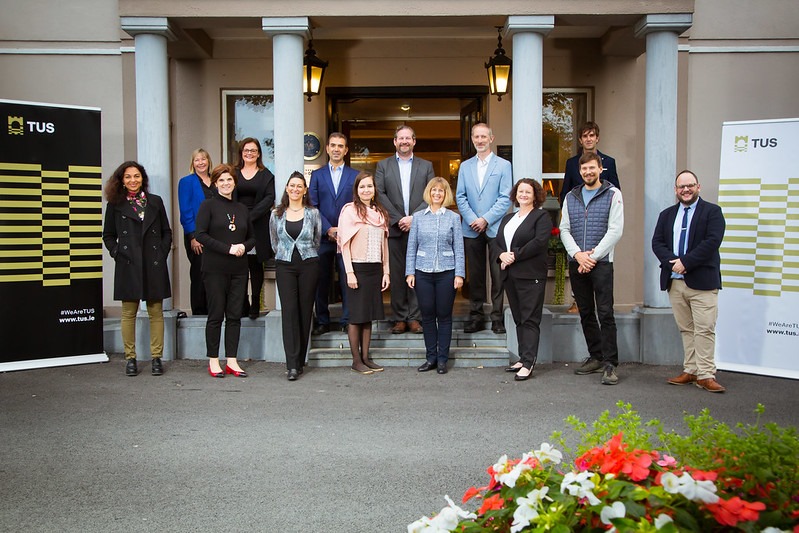About IN-PLAN
The overarching objective of IN-PLAN (Integrated Energy, Climate and Spatial planning) is to develop, test and roll out the IN-PLAN practice – a long-lasting support structure enabling local and regional authorities to effectively implement their sustainable energy, climate, and spatial plans. They aim to do so by:
- Integrating energy and climate planning with spatial planning (and other types of planning tools, such as mobility, infrastructure, etc.);
- Ensuring commitment at all political levels (through vertical integration); and
- Matching the included measures with specific dedicated local and regional budget lines.
On top of delivering this innovative and effective approach, IN-PLAN intends to empower local and regional governments and their agencies through a two-step capacity-building programme. From the start, the IN-PLAN consortium will engage 15 local and regional governments – the Lighthouses – in order to co-create, implement and refine the IN-PLAN practice, its operational guidelines and the capacity-building programme. 30 more local and regional governments – the Pilots – will also benefit, in part, from the IN-PLAN practice.
Once developed, the two-step capacity building will start. Phase one will aim at training the trainers: empowering energy, climate and/or development agencies from across Europe to become IN-PLAN Multipliers. Phase two will aim at passing on the knowledge to local and regional governments, the Replicators. They will be tutored either by the five national project partners or by the trained multipliers.
IN-PLAN’s ultimate goal is to empower local and regional authorities in developing and implementing integrated energy, climate, and spatial planning in their territories.
Follow #LifeINPLAN on every channel and visit https://fedarene.org/project/in-plan/ more information!
Funding
Funding is provided by the EU Life Programme.
Duration
2022-2026
Partners
- North-West Croatia Regional Energy Agency (REGEA)
- Institute for European Energy and Climate Policy (IEECP)
- UIV Urban Innovation Vienna Gmbh (UIV)
- Technological University of the Shannon: Midlands Midwest (TUS)
- Innovatum Progress AB (EKV)
- Area di Ricerca Scientificae Tecnologica di Trieste (AREA)
- Alba Local Energy Agency (ALEA)
- Tipperary Energy Agency (TEA)
- FEDARENE
Project Related Events
Webinar on District Heating and Community Power Generation in collaboration with HeatGrid Ireland and Community Power
TEA organised a webinar on District Heating and Community Power Generation in collaboration with Heatgrid Ireland and Community Power on 27th Nov. 2024. The session was organised on behalf of 3 European projects, INPLAN, OwnYourSECAP and Power ECOM. Sean Harty, the Lead Solutions Engineer from HeatGrid Ireland discussed an overview of the scope and aspects of District Heating in Ireland, the prospects of waste heat source, the costs and benefits of District Heating. Michael O’Shea, Energy Engineer from Tipperary |Energy Agency elaborated on the roadmap to energisation of communities, the roadblocks and enablers to support and empower communities in theri journey towards renewable energy.
Press Release
Brussels, 26 January 2023 – Spatial planning can be a solution to the issues that are now preventing
the implementation of the energy transition on national and sub-national levels. Examples of
integration of energy and spatial planning exist across Europe, but they are sporadic, not systemic and
rarely linked to local and regional budget lines. Such challenges highlight the need to adopt a holistic
approach and disrupt the silos across municipal departments: the newly-launched project IN-PLAN
address this need by developing and testing a framework (called the IN-PLAN practice) in Croatia,
Ireland, Italy, Romania and Sweden to then roll it out to other EU Member States (MSs) and regions
through a two-stage capacity building programme.
Local and Regional governments play a vital role in the fight against climate change in the European
Union. They are directly responsible for enabling and/or enforcing the implementation of national and
European legislation into practice as they directly and indirectly control the development of their
territories. However, different issues, such as the lack of binding targets and incentives or the lack of a
systemic, integrated, and consistent approach to energy and climate planning hinder the implementation
of the energy transition.
Spatial planning comes as a solution to these issues: it refers to the methods used mostly by the public
sector to influence the future distribution of people and activities in spaces of various scales. These
legally binding plans are undertaken with the aim of creating a more rational territorial organisation of
land uses and the linkages between them, to balance demands for development with the need to protect
the environment, increase resilience and to achieve social and economic objectives.
Despite the increased significance of and attention to spatial planning for the EU cohesion, numerous
obstacles are still present that hinder the in-depth implementation on national and sub-national levels,
as the EU itself has no general competence assigned within this field. In fact, there is a variety of spatial
planning systems across Member States (MS), all of which are rooted in national planning tradition and
custom. Examples of integration of energy and spatial planning exist across Europe, like the city of Lahti
in Finland. However, such experiences are sporadic, not systemic and rarely linked to local and regional
budget lines. Such challenges highlight the need to adopt a holistic approach and disrupt the silos across
municipal departments and scaling up climate-related public expenditure and finance to avoid longer term economic costs.
This is where IN-PLAN comes in: this newly launched LIFE project has the objective to empower local
and regional authorities to use spatial plans to enact their energy and climate policies, which will result
in a higher rate of implementation of climate change mitigation and adaptation projects, including
energy efficiency measures.
“Municipalities, cities and regions are at the front line in the fight against climate change, but they need
adequate tools and methods to be effective.” Says Tomislav Novosel, REGEA Expert Advisor and
Coordinator of IN-PLAN. “By focusing on spatial plans, practices they are already familiar with, we will
empower them to implement their strategies and take ownership of the energy transition within their
territories.”
IN-PLAN will operate in Croatia, Ireland, Italy, Romania and Sweden to develop and test a framework –
the IN-PLAN practice – that will then be rolled out in other EU MS and regions through a two-stage
capacity building programme. First, it will “train-the-trainers” by empowering at least 50 energy-climate
and/or development agencies from across Europe. Then, it will pass on that knowledge to local and
regional governments alongside the support needed to implement the integrated energy, climate and
spatial planning practices.
“Integrating local authorities’ planning practices is the missing link to make green transition a reality at
citizens’ level.” Jérémy Cléro, Energy Policy Expert at IEECP, states “IN-PLAN will give these authorities
the tool to make the transition happen in pilot municipalities, spread the model all over Europe and align on the Fit for 55 objectives from the bottom up.”
Within 5 years of the project’s end, almost 700 public authorities will be mobilised, resulting in the
development, implementation and monitoring of integrated plans which will in turn result in significant
energy savings, increase in the production of energy from renewable sources, CO2 emissions reductions
and investments into sustainability. This well fits the common effort for all countries and the EU
institutions to advance the role of spatial planning and territorial governance to meet their full potential
in contributing to shared EU goals and work with existing planning tools and procedures more
effectively, notably those related to economic investment, environment, energy and transport
Disclaimer:
Co-funded by the European Union under project ID 101076428.
Views and opinions expressed are however those of the author(s) only and do not necessarily reflect those of the European Union or CINEA. Neither the European Union nor the granting authority can be held responsible for them.







